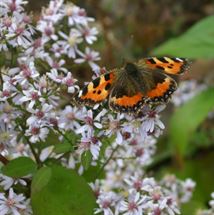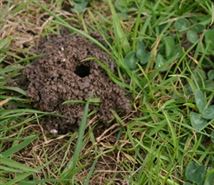
What is a Pollinator Garden?
A pollinator garden is a garden that is planted predominately with flowers that provide nectar or pollen for a wide range of pollinating insects.
The following features will make your pollinator garden effective:
-
Include a range of flower types, shapes and sizes
-
Plant your pollinator garden in a sunny site
-
Create shelter from prevailing cold wind
-
Group flowers of the same kind in large drifts
-
Plan for a succession of flowers throughout the whole growing season
-
Minimise or avoid the use of pesticides
More about these Ideas…
A pollinator garden is a garden that is planted predominately with flowers that provide nectar or pollen for a range of pollinating insects.
A pollinator garden can be any size. You might only have a balcony or a small yard but you can still plant pollinator-friendly flowers there.
You don’t have to be exclusive about this planting policy – there may be other flowers that you like to grow in your garden for various reasons – but the majority of flowers in a pollinator garden should be specifically chosen because they support pollinators.
In other parts of the world birds are often pollinators, but in Europe pollination is done by insects (or in some cases the wind).
Include a range of flower types, shapes and sizes.
Many pollinating insects can only exploit particular shapes or sizes of flowers. To support pollinator diversity you must cater for all shapes and sizes of insect mouthparts. Do this by planting a diversity of flower types. These planting lists will help you.
Plant your pollinator garden in a sunny site.
In our often dull and rainy climate insects need the sun’s warmth to help them stay active.
Create shelter from prevailing cold wind.
Use flowering hedges, or hedges of native hedgerow shrubs. These will create warm ‘micro-habitats’ within the garden. Hedges are better than fences at protecting gardens from wind.
Group flowers of the same kind in large drifts.
Many insects can only use particular types of flowers. By planting their favourite kinds of flowers together in large groups ('drifts') you make locating and exploiting that resource easier for them.
Plan for a succession of flowers throughout the whole growing season.
The climate of Britain and Ireland means that we have long growing seasons and some types of pollinating insects manage to breed two or more generations. But they need pollen or nectar from early spring until autumn in order to do this successfully.
Minimise or eliminate the use of pesticides.
If insect pests such as aphids become a problem there are well-known organic methods to control them. In a nature-friendly garden such pests are rarely a problem anyway, as they tend to be controlled by birds and other natural predators.
DOWNLOAD THIS PAGE AS A PDF VERSION
Last updated 14 November 2015. © Marc Carlton 2006 - 2015. Terms of Use.


